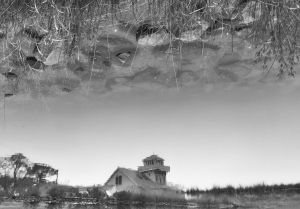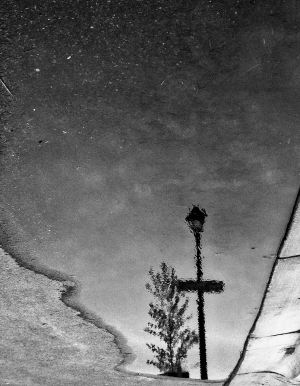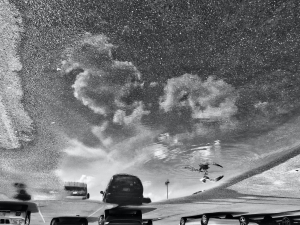Watergraphs



Watergraph is a term that I have coined, which comes from taking photographs of water reflections that have been intentionally turned upside-down. Depending on environmental factors like the wind, debris in the water, cloud formations, and the color of the sky, each inverted reflection naturally created a painting framed by whatever was surrounding the water. Other than simply rotating the photos 180 degrees, my images have not been Photoshopped, retouched, nor shot with multiple exposures. This has been part of my serendipitous quest for water reflections that range from little puddles to large bodies of water. You may want to turn the photo (or your head) upside-down to see how the images were originally discovered.
My favorite form of photography is “street shooting,” which is simply going for random walks — wherever I am — with camera (or camera phone) in hand and recording anything that caught my eye. It was a technique I learned from one of my biomedical photography classes at the Rochester Institute of Technology where I was given an assignment called, “Serendipity.” I had to look up the word after class: an accidental discovery of things in a happy or beneficial way. At first, I was puzzled because everything I learned to photograph during my five years at college was planned and factual. I learned to relish the freedom to go out in the countryside, the water, the mountains, the city, the suburbs, even my own yard, and shoot anything that captivated me in the slightest way.